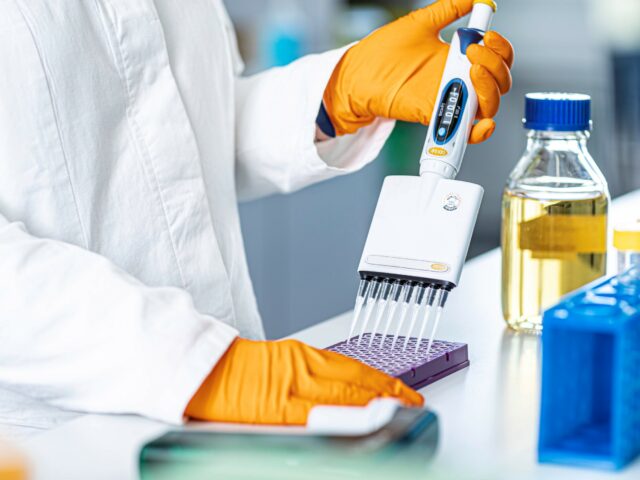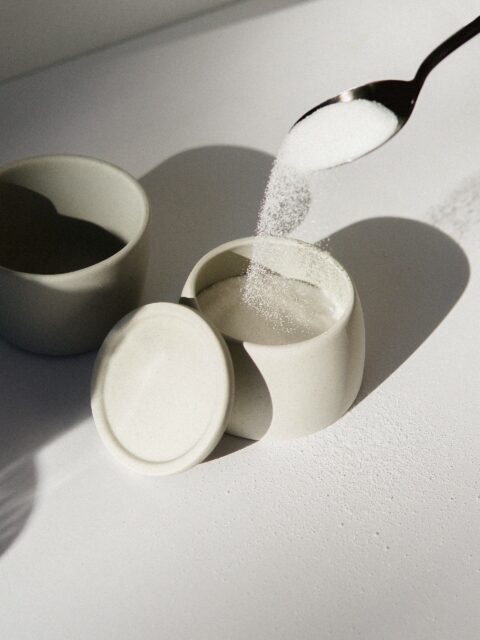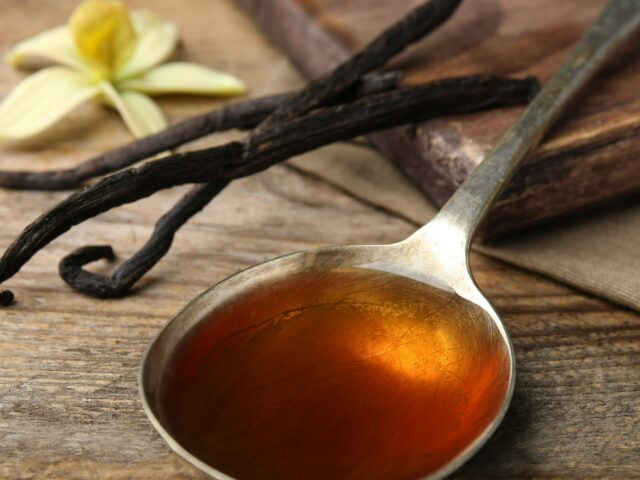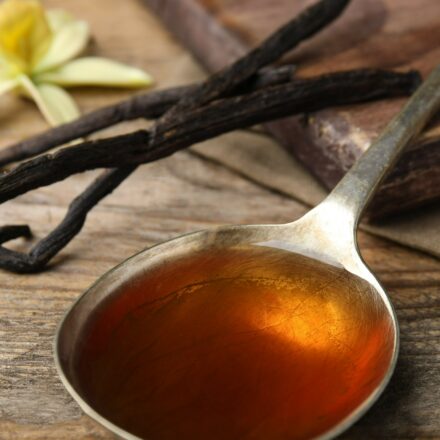The vanilla orchid grows in only a few tropical places. The vine must be carefully trained, and the flowers hand pollinated on exactly the right day. The mature seed pods are harvested and cured under special conditions for several months. Each vanilla bean is composed of only 2% vanillin, the actual flavor molecule. To make this flavor even more precious, the orchid doesn’t begin to bear fruit for three or four years, and it stops producing when it’s 10 to 12 years old.
That’s why the vast majority of the cookies, ice cream and an estimated 18,000 other flavored products use artificial vanillin. But this substitute is made from petrochemicals or wood pulp, and its production creates pollution.
Synthetic biology offers another way.
Techniques of synthetic biology, or synbio, redesign living organisms to have new properties or produce useful molecules. Synbio companies hack yeast or bacteria to produce bio-identical vanilla—and other flavors and colors.
Brewmasters
The process of creating synbio molecules is much like brewing beer. The engineered microorganisms grow in a nutrient bath inside stainless steel vats. Instead of secreting alcohol, they produce the desired molecule.
J. Casey Lippmeier, vice president of innovation at Conagen, says, “The biochemistry of a plant is comprised of genes, enzymes and biochemical pathways. The parts and processes a plant uses to make a molecule like vanillin are transferable.”

Conagen transfers the genes, enzymes and biochemical pathways from different organisms, including vanilla orchid cells, and inserts them into microbes. Then, either those microbes produce vanillin directly or, in a two-step process, the company separates out the enzymes and uses them to make the product.
No doubt because of the huge market, estimated at $1.43 billion in 2021, a number of synbio companies are working on or producing vanillin, including Evolva and Amyris.
Vanillin is just one of many flavors and colorants being created with synthetic biology. Similar processes are being used for a variety of flavors and food colors, including stevia sweeteners, citrus, ginger and yuzu.
Sara Marino is senior flavorist at Sensegen, a flavor and fragrance house that creates custom flavors and scents for brands. Sensegen uses only biotechnology-based ingredients derived from fermentation. It acts as a bridge between its partner, Conagen, and companies looking for everything from the most realistic strawberry flavor to something delicious that’s not found in nature.
“Some clients already know what they want and use biotech as a good platform. Others don’t have any idea. It’s our job to understand and fulfill their expectations,” Marino says.
Natural nomenclature
Synbio companies say these flavors appeal to the growing number of consumers looking for natural, organic and sustainable products. These flavorings are variously described as found in nature, bioidentical, natural, nature-identical and/or non-GMO.
The synbio companies say that, because the flavoring molecules are identical to those extracted from plants and are made via biological processes, they can be designated as natural. And, because no part of the engineered organisms remains in the final products, they’re non-GMO.
Not everyone agrees. In the U.S., the Non-GMO Project offers a Product Verification Program that states that microorganisms used to produce a product mustn’t be genetically engineered.
In the E.U., it’s still up in the air. A study by the European Commission concluded that current law regarding GMOs hadn’t kept pace with science and was difficult to apply to new genomic techniques.
It’s the manufacturers that ultimately have to make sure they’re in compliance with applicable regulations for their end products.

Aside from gaining official non-GMO designation, these flavorings are getting the green light for use in foods. Amyris’ RebM sweetener, a product using molecules identical to stevia’s most potent element, is approved for food use in Canada, Brazil, Colombia, Costa Rica and the U.S.
There’s a taste for these new flavorings among traditional food ingredient providers. Conagen is working with BASF on vanillin. Evolva has a longstanding collaboration agreement with International Flavors & Fragrances. Amyris has a partnership with Ingredion, a multinational food ingredient provider whose customers include Coca-Cola and Pepsico.
When it comes to mass-market products, “The ingredients won’t matter to the end consumer. The consumer just wants Coke,” says Randy Baron, lead portfolio manager at Pinnacle Associates, a large institutional investor in Amyris. Pinnacle expects that to happen in the next three to five years.
The sugar problem
There’s one hitch in the sustainability story: While bioreactors can replace farmland used to grow plants that provide flavoring, most bio flavors are brewed in a broth that’s mostly sugar. The World Wildlife Fund says it takes 10 gallons of water to produce a pound of refined sugar, and that industrial sugarcane farming increases deforestation, pollutes freshwater ecosystems and even contributes to coral death in the Great Barrier Reef.
Pinnacle’s Baron argues that, because synbio manufacturing is highly efficient, it can greatly reduce the amount of sugar needed to produce a flavor.
The industry also helps promote more sustainable farming methods. Amyris gets its sugar from Raizen, a Brazilian producer that’s certified by Bonsucro, an organization promoting sustainable sugar production. In addition, Raizen uses sugarcane straw to produce energy.
I view the industry as the internet in the early 1990s. I don’t know who will be Pets.com and who will be Amazon.
—Randy Baron, Lead Portfolio Manager, Pinnacle
As with any sustainability initiative, it’s a complex calculation. Synbio companies hope to create viable replacements for flavors that are usually difficult to source, animal-derived or produced by water- and fertilizer-intensive farming.
It’s clear that this is a business sector that’s taking off. Says Pinnacle’s Baron, “I view the industry as the internet in the early 1990s. I don’t know who will be Pets.com and who will be Amazon.”
Lead photo of vanilla bean and extract courtesy of Shutterstock.


The world is facing a vanilla shortage for the second year. When you think about the delicate and labor-intensive way that the most popular flavor in the world is produced, it’s hardly surprising.